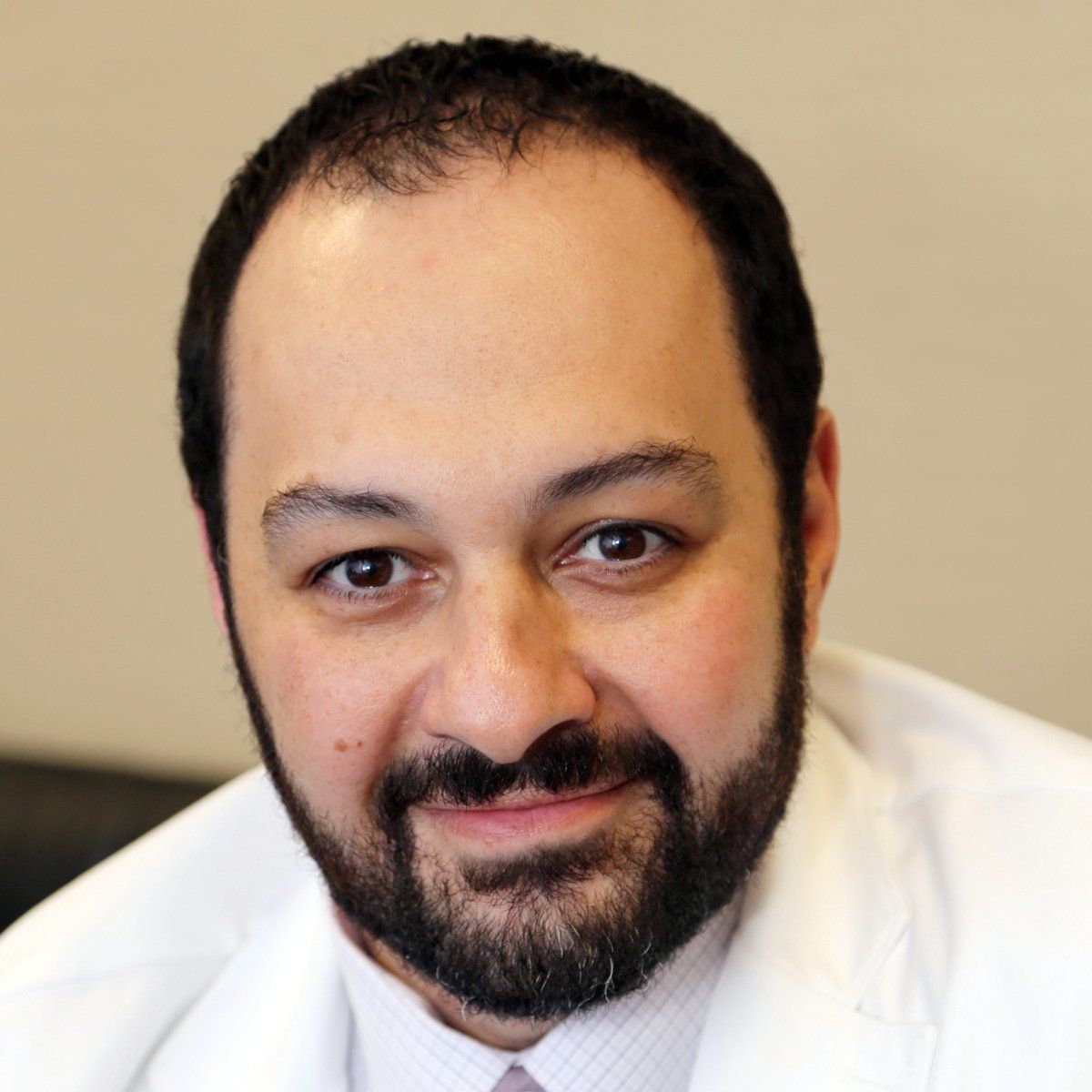
- Case-Based Roundtable
- General Dermatology
- Eczema
- Chronic Hand Eczema
- Alopecia
- Aesthetics
- Vitiligo
- COVID-19
- Actinic Keratosis
- Precision Medicine and Biologics
- Rare Disease
- Wound Care
- Rosacea
- Psoriasis
- Psoriatic Arthritis
- Atopic Dermatitis
- Melasma
- NP and PA
- Skin Cancer
- Hidradenitis Suppurativa
- Drug Watch
- Pigmentary Disorders
- Acne
- Pediatric Dermatology
- Practice Management
- Prurigo Nodularis
- Buy-and-Bill
Article
How to launch a successful social media campaign
Is your Facebook, Twitter or other social sites working for your practice? Not sure or maybe you need a little help. Check out what experts have to say about launching a successful media campaign for your practice. Get the tips.
Embarking on a social media campaign is like anything else in business. To improve your chances for success, you have to know what you want to accomplish, have goals and have a plan for achieving those goals.
Determine what you want social media to do for you

Patricia RedsickerThe first step in launching a social media campaign is to figure out what you want social media to do for you, according to Patricia Redsicker, social media manager for the U.S. Pharmacopeial Convention (USP) and a former social media consultant for dermatologists and others.
READ: Why social media is important in dermatology
“What you see happening is professionals saying, let’s try this social media because everybody else is doing it. But I think the most important thing to focus on … [is]: What do you want social media to do for you? If you don’t know what you want social media to do for you, and you’re doing it because everybody else is, you’re going to get really frustrated,” Redsicker says.
Depending on one’s business goals, dermatologists might use social media to brand themselves and their practices to current and potential patients. Other uses of social media include engaging with referral sources and networking with experts in your and other specialties. Some aim to get national exposure as experts in the field or celebrity dermatologists.
What to expect
Whatever the goal, the approach is engagement. Social media is more about building relationships than it is about closing deals.
INTERESTING: Three marketing mistakes healthcare practices make
A potential client contacted Redsicker about starting a social media campaign aimed at increasing the patient base by 15% in three months. That’s not what social media is about, Redsicker says. It’s a slow building of followers. Building presences on Facebook, Twitter and other social media sites requires understanding the platforms, the audiences and what it is you want to say. The followers and people who like you are usually earned.
“Your initial goal should be things like brand awareness,” Redsicker says.
Subsequent goals might be to increase followers and likes by a certain percentage in a certain time period. People who follow you or like you know you exist. The bottom line benefit of getting more patients through the door should come with time, she says.
NEXT: Learn from the best
Learn from the best
Engaging people on social media might be an uncomfortable practice for old-school physicians who have a paternalistic view of medicine, according to Redsicker. Social media exposes doctors to questioning and potential criticism. To engage, doctors have to open up to their audiences and accept a certain level of vulnerability.
RECOMMENDED: Establish brand identity to unleash your practice's potential
To learn how to navigate social media waters, dermatologists should follow the social media activities of those they want to emulate.
“Perhaps your passion is skin cancer, [and] you want to educate people on melanoma. Find a dermatologist who has a well-established Facebook presence for their practice or a well-established Twitter presence … as a dermatologist and watch them. Spend two to four weeks looking at them every day. Follow them and see how they handle themselves,” says Bryan Vartabedian, M.D., pediatric gastroenterologist at Baylor College of Medicine, full-time clinician at Texas Children’s Hospital, and director of Community Medicine for the Division of Gastroenterology and Nutrition. Dr. Vartabedian founded 33Charts.com, a blog he started in 2009, which explores the intersection of medicine, social media and technology.
According to Dr. Vartabedian, what those physicians are not saying and doing is as important as what they are saying and doing.
For example, physicians want to maintain a professional presence on public media.
ALSO READ: Three reasons why your practice should support a cause
“Just like when you’re at the grocery store and there are patients around. You act and behave a certain way. Things that are highly personal may be off limits,” Dr. Vartabedian says. “I personally avoid religion. I personally avoid politics. I tend not to talk about alcohol. [And] I don’t badmouth my hospital or employer.”
NEXT: Lay the groundwork
Lay the groundwork
With your social media goals established, start to strategize. Redsicker recommends asking questions, such as: How are we actually going to do this? Who are we targeting? What resources do we have to make this thing work? Where are we going to get content from?
1. Consider hiring a pro

Sam Hanna, M.D.Sam Hanna, M.D., a dermatologist in Toronto, Canada, knew social media was something in which his small group practice should get involved.
“It was part of what I did. Facebook and Twitter were things that I used to communicate with people,” Dr. Hanna says.
But putting it into practice was more complicated than engaging in virtual chats online. Dr. Hanna started by producing the content for Facebook and Twitter.
“It became clear from a number of fronts that we needed somebody else to do that. The practice was growing. So about nine months ago, we hired a marketing manager-an esthetics manager. I thought I was doing a good job. Once she started doing this, I realized I wasn’t really doing a good job,” Dr. Hanna says.
CHECK OUT: Designing the optimum office space
Dr. Hanna says his personal experience in using social media didn’t translate to business experience. Personally, he says he thought it was important to put content out there. But social media for professionals and businesses is more strategic, targeted and constant.
“I’m really proud of the content we put out. It’s really more about education than it is about marketing,” Dr. Hanna says.

Jeanine B. Downie, M.D.Montclair, N.J., dermatologist Jeanine B. Downie, M.D., says she was too busy to take on the social media and website aspects of her practice. So, she hired a social media marketing firm, Ekwa Marketing. Today, she and her practice are on Facebook, Twitter, LinkedIn, YouTube, Pinterest and more. The firm helps her get her messages out and assists with reputation management. Some examples: Dr. Downie does guest appearances on shows including the Today Show, Dr. Oz and Good Morning America. Ekwa created a YouTube channel for Dr. Downie and loads her videos from television appearances, as well as videos of patient testimonials on the channel. Ekwa also makes sure the blogs that Dr. Downie writes for media outlets, such as Refinery29.com, are loaded to her website, Tweeted and properly linked for maximum exposure.
2. Develop your brand
To develop your brand, you have to understand your brand, says Naren Arulrajah, CEO of Ekwa.com, a marketing firm that works with more than 200 doctors, including a large percentage of dermatologists.
Branding covers everything from the style of your communication to the look of your website, logo and social media pages. If you have a conservative approach, you’d think about developing a conservative look. If you’re lighthearted or like humor, let that come out in your words, style, tone, photos and overall look-all while maintaining professionalism, according Arulrajah.
3. Measure, but not in the traditional sense
Measuring social media results is different from measuring the return on investment from traditional advertising. One way in which dermatologists can measure social media success is to monitor how people react to what they do on the internet by the numbers of likes and followers.
READ: Find your work-life balance
La Roche-Posay, a division of L’Oreal, uses social media to promote its SOS (Save Our Skin) campaign, which it does in conjunction with the Women’s Dermatologic Society. Gene Colon, Esq., international director of medical and media relations for La Roche-Posay, says he looks for fan base growth (the people following the brand), as well as cultivation of those already engaged with the brand. It’s important, he says, to use social media to get to know them and better understand their needs. With this information, La Roche-Posay can better engage fans in discussions that will interest them, he says.
“…it’s general brand awareness that we’re looking for,” Dr. Hanna says. “[Our] Twitter followers are increasing.”
But even measuring hard numbers, like Twitter followers, can be deceiving, according to Dr. Hanna.
“I was surprised at the number of spam Twitter followers,” Dr. Hanna says.
The practice’s marketing firm goes through and gets rid of spam on a monthly basis, Dr. Hanna says, so followers are more a true reflection of social media success.
NEXT: Another phase of interaction
Another phase of interaction
“I’m not expecting social media-Twitter, Facebook or otherwise-to be the way in which we garner new patients. I’m looking at it as a way to communicate-a value-added service. I want it to be something that we do because I think it’s a way that people are increasingly communicating,” Dr. Hanna says.
CHECK OUT: Bizarre ICD-10 codes for derms
Dr. Hanna says social media helps him to reach a broader audience. He had a recent skin cancer screening, Tweeted about it and people re-Tweeted the news. As a result, more people knew he was doing it and turned out for the screening, he says.
“I don’t think it’s anything that’s ever going to be more useful that word of mouth,” Dr. Hanna says. “Social media is sort of the new version of word of mouth. But, we don’t put all our eggs in that basket. [Social media] is another phase of our interaction with our patients and our potential patients.”
2 Commerce Drive
Cranbury, NJ 08512
All rights reserved.





